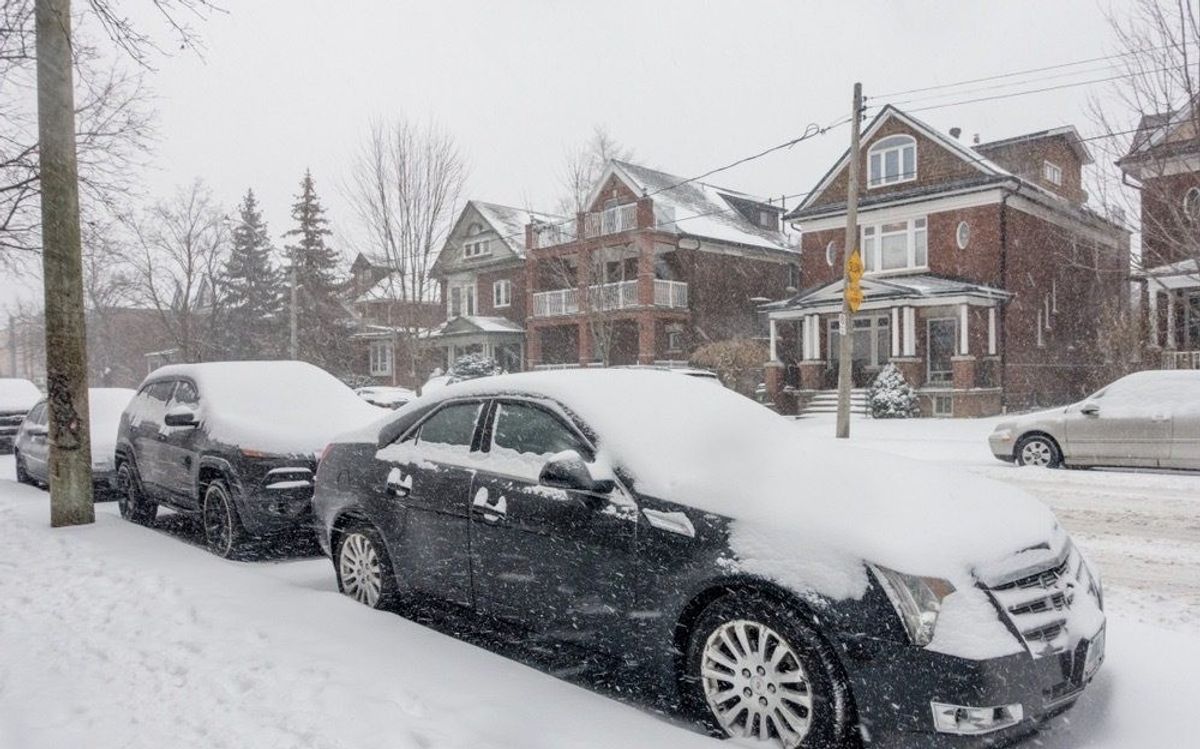Trix may be for kids, but what about Toronto? Just how kid-friendly is this city?
Ask anyone who grew up here in the last century — let's say in the 1960s and '70s — a time when kids roamed free. They will tell you there's no place for children in today's Toronto.
For reasons real and imagined the city is now out of bounds to the young.
Parents who let their sons and daughters wander the streets, ride their bikes everywhere, take the TTC, even go to the Ex at the tender age of, say, 10, 11,12 or older — as was normal decades ago — would be considered irresponsible today.
Perhaps even criminal.
In the Age of Paranoia, moms and dads are reluctant to let their kids walk a block or two by themselves to school. That's why there's a traffic jam in front of Toronto schools every morning and afternoon.
And really, who can blame them?
When children are shot in playgrounds and killed by gunmen while eating in a restaurant with their family on a busy main street, who is safe in this city?
In fact, in a world torn apart by fighting, mental instability and stress, Toronto remains a safe city.
And although there's little the police can do to reduce or stop violence — often, they only make it worse — we can design our streets, buildings and public spaces with a mind to the people who live here and their quality of life, rather than the crass exigencies of politics, profit, and planning.
READ: How Design And Architecture Can Improve Toronto’s Community Well-Being
What if every new condo complex — for that matter, every new office tower — was required to make room for daycare, for families and for kids to play?
That may sound pie-in-the-sky, but it's starting to happen.
For example, in Menkes' two-towered Harbour Plaza development on the Toronto waterfront, 10 per cent of units, each with three bedrooms, have been set aside for families. There's also a spacious children's playroom that extends indoors and out.
On the other hand, not so long ago, a mother of three who then lived in a condo on The Esplanade got involved in a pitched battle with the building's board of directors when she suggested the possibility of installing a playground on the roof.
The residents were adamantly opposed to the idea, which, unsurprisingly, never came to pass. Yet that same building on The Esplanade was home to more than 30 families at the time.
Little wonder condo-dwellers with kids talk about "guerilla parenting."
That can mean anything from playing with your children in the empty parts of the underground parking garage, running and jumping in hallways, as well as taking full advantage of all the in-house amenities — especially swimming pools.
But kids are social creatures. They want to be with other kids.
Even in those mythical, traditional family neighbourhoods such as North Toronto, Leaside, Riverdale, and Trinity-Bellwoods, kids prefer to play street hockey, sidewalk hopscotch and at each other's home.
Parks are great, but for most a bit too far away to visit without an adult. Porches are for parents and because they're hidden away, backyards are mostly empty.
Condo towers, typically on main streets, are designed for young adults. They want location, not space.
At a time when the city's first "micro-condo" is nearing completion on Queen St. West, the pressure to find larger family-sized units grows ever more intense.
READ: The Most And Least Affordable Toronto Condo Neighbourhoods
Worse still, the culture of North America, let alone Toronto, is one that views the very notion of kids in condos, especially high-rise condos, with deep suspicion.
In cities across Europe and Asia, however, most children grow up in apartments, some in skyscrapers. Here, though, parents more often choose to move to the suburban hinterland once their welcome strangers start to arrive.
Whatever it might lack, suburbia offers space. Those who stay in the city opt instead for experience.
But the housing industry still punishes parents of young children for their choice.
Though players such as downtown-councillor-turned-federal-MP Adam Vaughan managed to convince developers to include three-bedroom units in their projects, for most buyers these larger apartments cost too much.
Stacked townhouses are a better alternative, but there aren't enough to go around.
A recent Forum survey of more than 2,500 Torontonians found that according to 26 per cent of respondents, the biggest issue they face is affordability.
READ: How Much You Need To Earn To Afford A Home In These GTA Cities
Though that applies to all aspects of urban life, it is felt most painfully when it comes to housing.
For renters and buyers, keeping a roof over one's family's head has become increasingly difficult. And for those who do manage, there's the problem of daycare.
If you're lucky enough to find space, the average cost is upwards of $1,500 a month.
European cities deal with affordability, in part by allowing various forms of co-operative living arrangements.
In Berlin, for instance, there are residential complexes that house families with children as well as single occupants. Shared space — kitchens, dining rooms, gardens — features prominently in these developments.
They are places in which all inhabitants have a direct social and economic interest.
For parents, who realize pretty quickly that they alone cannot raise their kids, the beauty of the co-op is how it becomes a village-in-a-building.
Sometimes, that's all it takes.





















